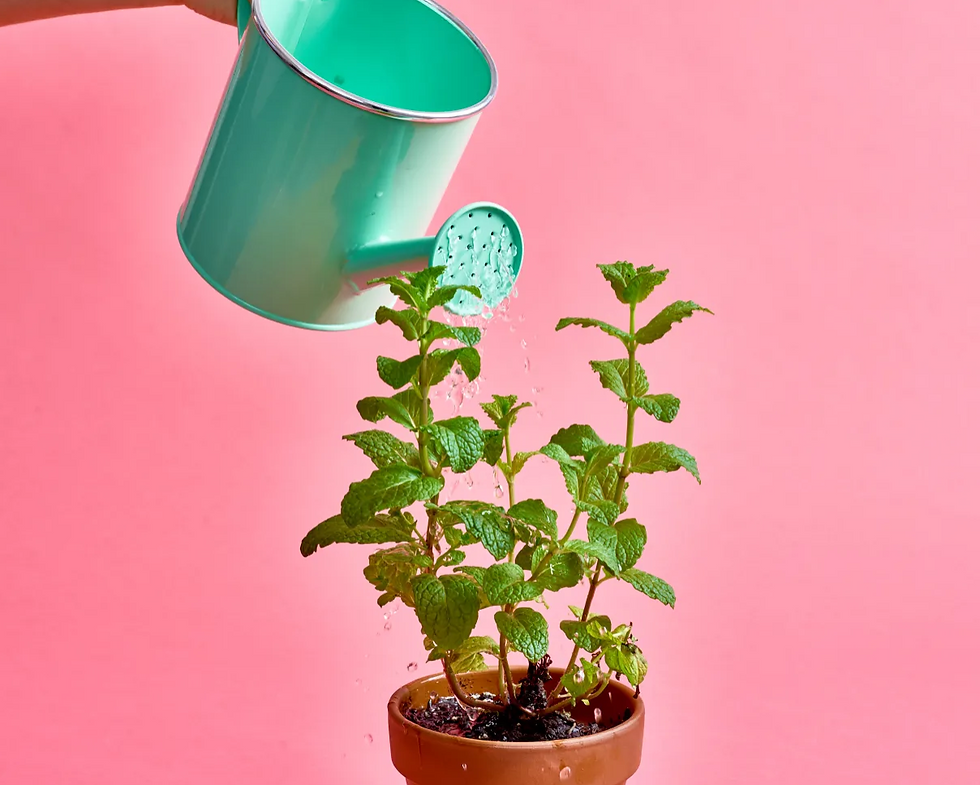Year Round Container Plants
- GrowingLittleJOYS
- Jun 27, 2019
- 4 min read

Don’t you wish you could grow food year round? Or maybe you are pining for the perfect garden so you can grow your own vegetables, but you simply don’t have enough.
You don’t have to let the season, the size of your property, or your location stop you from growing your own food. You really can grow food all year, even in the heat of summer or the icy cold of winter. With a little creativity, you can grow healthy, nutritious food in the city and in the suburbs. Container gardening is a great way to get started, and buckets make it easy and inexpensive to grow your own food indoors and out.
Five-gallon buckets are a great choice because they are large enough to hold multiple plants while leaving enough room for good drainage. You’ll need to get or make some quality potting soil or some other kind of good dirt that has been fortified with compost or worm castings.
You’ll also need some lighting – either through a good sunny window or grow lights. Lastly, you’ll need some healthy plants or quality seeds.
What Foods Can You Grow Indoors In Five-Gallon Buckets?
You might be surprised at all the foods that you can successfully grow inside your home or on your balcony, porch, or patio. Here are some of the most popular foods to grow indoors in 5-gallon buckets, but don’t be afraid to try other varieties, as well.
1. Arugula
2. Beans
3. Carrots
4. Chives
5. Ginger
6. Kale
7. Lettuce
8. Mint
9. Onions
10. Peas
11. Peppers
12. Radishes
13. Spinach
14. Swiss Chard
15. Tomatoes
Twelve Tips for Indoor Bucket Gardening
Use food grade buckets – Be mindful of the five-gallon buckets you choose for your indoor garden. Any chemical residue in the bucket or even in the plastic can be absorbed by the plant, affecting the plant’s health and your food. For the safest and best results, choose food grade buckets. You can often purchase used icing buckets from bakeries very inexpensively.
Cut holes in your buckets for drainage – Your plants need good drainage, so you may need to carefully cut or drill holes in the bottom of your bucket. Put a couple inches of gravel or loose stone in the bottom of your bucket before adding any soil.
Water correctly – One of the most common problems of indoor gardens is incorrect watering. Most plants will need moist but not soggy soil.
Provide enough light – Most vegetable plants need a lot of light. For the most part, south facing windows will provide the most light and warmth to your plants. For some vegetables, this may still not be enough light, so you will need to supplement with grow lights or at least fluorescent light bulbs such as discussed in this article on grow lights.
Know how much light your plants need – Some plants, like tomatoes or peas, need a lot of sunlight to grow. Other plants, such as spinach and lettuce will require much less. Root vegetables will generally require more sunlight then leafy vegetables. Read your seed packets and plant information to make sure you know what each plant needs.
Pollination – If you grow plants such as peppers indoors, you will need to pollinate them yourself in order to get them to bear fruit. You can use a cotton swab to pollinate, as this video from MIGardener suggests.
Acclimating your plants – If you are starting with plants that have been growing in your garden throughout the summer, you will need to acclimate them to the indoors. This is similar to ‘hardening off’ plant starts that you have grown indoors and are moving to the garden.
If there are any plants that you will be moving inside for the winter from your garden or patio, take the time to acclimate them to the house by moving inside for an hour or two and then putting them back outside. Over the course of a week, gradually increase the time the plants spend indoors. This will help the plant avoid shock.
Beware of drafts – When placing your plants indoors, be sure to keep them free of drafts. Cold air blowing on the plant can stunt or kill the plant. Avoid locations near doors in the winter and air conditioners in the summer.
Fertilize – Plants need food, too, so be sure they have fertilizer. You may want to use all-natural compost, worm castings, commercial fertilizers, or organic fertilizers. Choose the ones that suit your plants and your plants’ needs.
Choose healthy plants or good seeds – Use plants for your indoor garden that are healthy, with good coloring and strong stems. Use seeds from reputable sources with good germination rates. Poor plants and poor seeds will not grow any better indoors then they will outside, so make sure your garden gets off to a good start with healthy plants.
Companion plant – You can companion plant in your five-gallon buckets for interest. Try mixing swiss chard with an edible flower like pansies for a striking combination. Or try mixing lettuce with some herbs or spinach with onions.
Experiment – Don’t be afraid to experiment with your bucket garden. You may want to experiment with grouping different plant groups together or moving your plants to different windows to see which vegetable grows best where.
Remember that even the best gardeners have plants that die. Just try to figure out what went wrong and replant the empty spot again so you can keep on growing vegetables.
This article was first published on https://homesteadsurvivalsite.com/foods-grow-buckets-year-round/







Comments